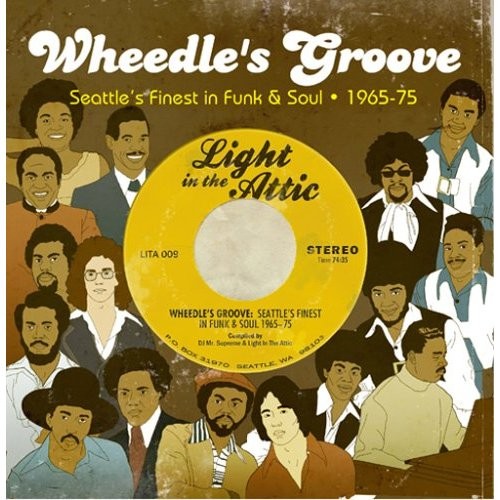
Quick, what’s the first thing that comes to mind when when you think about the Seattle music scene? Was it Nirvana or Pearl Jam? Soundgarden, maybe? Or Mudhoney? If so, you’re in good company. The grunge scene that exploded in Seattle in the ’90s wasn’t only the best thing that’s happened to the flannel industry since the invention of coldness, it completely annihilated hair metal and transformed late 20th-century guitar rock in the blink of a red-rimmed eye. But sonically speaking, Kurt Cobain and Eddie Vedder may not represent the best of what the Great Northwest has to offer.
In the late 1960s and early 1970s, Seattle was home to a thriving and innovative soul scene. Although it seems unlikely that it would have ever grown to rival soul meccas like Detroit, Memphis, Philly, or Muscle Shoals, local disc jockeys at KYAC, the city’s only black radio station, kept the locally produced wax spinning and the nightclubs packed. Seattle soul was even beginning to attract some national attention when disco seized the spotlight and the bottom fell out.
Director Jennifer Maas‘ loving documentary Wheedle’s Groove — named after a lurking instrumental that was in turn named for a former Seattle Supersonics’ mascot, the Wheedle — was inspired by an obscurity obsessed audiophile named DJ Mr. Supreme , who started collecting Seattle soul after discovering a single called “Bold Soul Sister” by a group called A Black on White Affair in a cheap used-record bin.
Wheedle’s Groove by Annakonda
DJ Mr. Supreme shared highlights from his collection with like-minded music fans at Seattle’s Light In The Attic record label who in turn assembled a first-rate collection of songs for a comprehensive CD also called Wheedle’s Groove. They also tracked down many of the original band members and convinced them to reunite for the the CD release party in the summer of 2004. Maas’ film is built around interviews with and performances by artists who participated in that unique multi-racial and multi-generational event.
Here’s a sampling of songs by some of the best artists featured in Maas’ documentary.